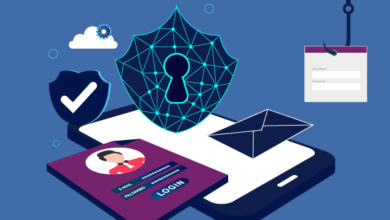Ensuring Mobile Application Security: Best Practices and Strategies

The Importance of Mobile App Security
As mobile applications become more integral to daily life, ensuring their security is crucial to safeguarding sensitive user data. Weak security can expose personal information, leading to data breaches and damaged trust. Developers must incorporate thorough security testing to identify and fix vulnerabilities before apps are released to the public. By doing so, they protect users and maintain the credibility of their platforms. Understanding what is mobile application security is vital for any developer or business looking to protect user data and ensure the trust and reputation of their platform.
Best Practices for Mobile App Security
Following best practices for securing mobile applications can significantly decrease potential risks. Here are a few essential tactics:
- Use Strong Authentication: Utilize multi-factor authentication (MFA) to enhance security and prevent unauthorized access. MFA mandates that individuals present two or more verification factors to gain entry to a resource, such as an app or online account. This effectively diminishes the likelihood of security breaches by complicating hackers’ attempts to access user accounts.
- Encrypt Sensitive Data: To safeguard data integrity, encrypt all confidential data when transmitting and storing it. Encryption changes data into a code to hinder unauthorized access. Utilize robust encryption algorithms widely accepted in the industry to protect user data while in motion and at rest. This precaution guarantees that data remains unintelligible to unauthorized users even if intercepted.
- Perform Regular Security Audits: Conduct frequent audits to review and update security measures, identifying and mitigating potential vulnerabilities. Regular security audits help systematically examine app security measures, identify weaknesses, and implement corrective actions. It is essential to regularly assess and revise these security protocols to stay ahead of emerging threats.
- Employ Secure Coding Practices: Adhere to secure coding guidelines, such as avoiding hard-coded credentials and using parameterized queries to prevent injection attacks. Secure programming thwarts common vulnerabilities, such as buffer overflows, SQL injection, and cross-site scripting (XSS). Additionally, developers must adhere to the principle of least privilege, limiting code access to only the essential data and functions.
Common Vulnerabilities in Mobile Apps
Despite best efforts, vulnerabilities can still creep into mobile applications. Some of the most common include:
- Insecure Data Storage: Storing data without encryption can easily lead to data breaches. When sensitive data such as user credentials, personal information, or payment details are not properly encrypted, they become susceptible to unauthorized access. This could result from identity theft, financial loss and other security incidents.
- Improper Session Handling: Failure to securely manage user sessions can result in unauthorized access. Secure session management involves processes that protect the session information throughout its lifecycle. This includes using secure tokens, setting appropriate session timeouts and ensuring that session data is transmitted over secure channels.
- Weak Server-Side Controls: Weaknesses in server-side controls can expose the application to various attacks, including remote control and data exfiltration. Server-side controls serve as the backbone of the mobile application security framework. Implementing robust server-side security measures, such as input validation, access control and regular patch management is essential to fortifying the app against attacks.
Strategies for Continuous Security Testing
Continuous security testing is pivotal for maintaining robust mobile application security. Here are some strategies to consider:
- Automated Testing: Automated tools regularly test for common vulnerabilities and integrate these into the development pipeline. They can quickly and efficiently scan for various security issues, providing developers with immediate feedback and enabling them to address vulnerabilities early in development.
- Manual Testing: Employ security experts to conduct thorough manual testing for more complex vulnerabilities that automated tools may miss. Manual testing involves a human element that can identify nuanced security issues and assess the application’s security posture from different perspectives, including logic flaws and business logic vulnerabilities.
- Penetration Testing: Simulate attacks to identify potential security weaknesses and understand how an attacker might exploit them. Penetration testing, also known as ethical hacking, entails replicating genuine attacks on the application to reveal vulnerabilities that can be exploited. This method assists organizations in finding and fixing security vulnerabilities to prevent exploitation by malicious actors.
- Security Training: Regularly train development teams on the latest security practices, tools and threats to foster a culture of security awareness. Security training equips developers with the knowledge and skills to implement secure coding practices, recognize potential threats and respond effectively to security incidents. Keeping teams updated on the latest security trends and emerging threats is essential.
Monitoring and Updating Mobile Apps
Security doesn’t end once the app is live. Continuous monitoring and updating are essential:
- Monitor for Threats: Use security monitoring tools to identify and react instantly to abnormal activities. Continuous monitoring enables organizations to detect potential threats and promptly respond to reduce risks. Automated monitoring solutions can aid in identifying anomalies, questionable actions and possible security breaches.
- Regular Updates: Frequently update the app to fix security vulnerabilities and improve its features, ensuring it stays secure and functional. Regular updates are crucial in patching known vulnerabilities, enhancing security mechanisms, and introducing new features that improve the user experience. Organizations should establish a routine update cycle and promptly address any security issues identified.
- Feedback Loops: Encourage and incorporate user feedback to enhance security measures and address any issues promptly. Feedback from users can offer valuable insights regarding potential security issues and areas that need improvement. Establishing robust feedback loops ensures that user-reported issues are addressed quickly and helps build a more resilient security framework.
Monitoring and updating your mobile app security will ensure a safe user environment. Continuous vigilance and a dedication to ongoing improvement are essential for maintaining a strong security stance in the long run.
The Future of Mobile App Security
As mobile technology advances, security strategies and tools also progress. Up-and-coming trends like AI-based security solutions and blockchain technology offer new aspects to mobile app security. AI can identify patterns signaling malicious activity to detect and counter threats in real time by analyzing vast amounts of data. However, blockchain technology can improve the honesty and reliability of mobile applications by offering precise and secure transactions.
To stay ahead, it’s essential to keep abreast of the latest security trends and adopt proactive measures. By doing so, developers and businesses can ensure that their mobile applications remain secure against ever-evolving threats. The future of mobile app security will likely see increased collaboration between cybersecurity experts, developers and end-users to create more resilient and adaptive security frameworks. Embracing innovation and maintaining a forward-thinking approach will be critical to safeguarding mobile applications in the future.




